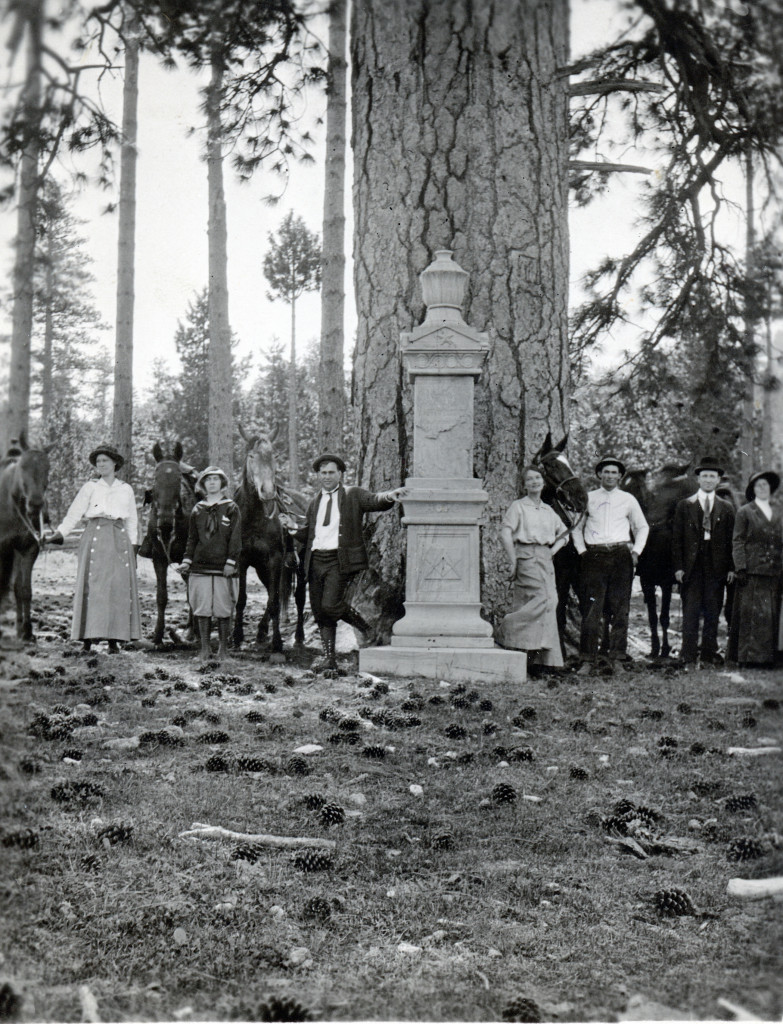
In 1878, Edward Weed took over as editor and publisher of the Lassen Advocate. He brought a lot of life to the newspaper. From time to time he would make excursions and write about those experiences. This is one of them. The reader will note the sawmill on Diamond Mountain. At any given time there were two to as many four mills along the mountain range between Gold Run and Janesville.
Lassen Advocate, September 3, 1880: Down the Valley. On Monday we took a ride down Honey Lake Valley, passing by way of Richmond, which is now only a quiet hamlet, but which was a lively town quite a number of years ago when it was a business place considerable more of a town than Susanville. The latter place soon shot ahead in importance and Richmond as a town is one of the “has beens.” A few miles farther we pass the huge pine tree near whose base stands the monument over the grave of Peter Lassen, the early pioneer, who was killed by Indians, but whose memory is perpetuated in the name of the County, as well as indelibly imprinted in the minds of many who knew and esteemed him.
Next beyond this is the ranch and homestead formerly owned by him, but now the home of John Hulsman, where the wife of Judge Hendricks was born as for several years it was the home of the late John S. Ward and family. The ranch is a good one, and in fine condition. It has a fine meadow reclaimed from swamp land by under-draining, at an expense of nearly two-hundred dollars. Hulsman has quite a notoriety for raising splendid bacon.
He accompanied us to the McDow sawmill now owned by Henry Vogt, where we met the sawyer, C.A. Moore. This mill is not running yet, but will commence next week, a large amount of fine logs being already on hand. The mill has a capacity of 14,000 feet per day, is run with a steam engine of thirty horse power, and has whistle which can be heard for ten miles. The sawdust is carried away by a stream of water which runs under the mill in an open box, into which it falls from the saws. Pieces of bark often fall into it and obstructs the sawdust and this is removed by a sagacious shepherd dog, who constantly watches the box or trough for its distance of about two hundred feet and whenever a piece falls in the dog takes the bark in his teeth drags it out and allows the sawdust to pass without hindrance.”
Subscribe and support this site for $5.00 a month, what a bargain. How many spend that much at Starbucks on any given day, or other indulgences?
Love this!!!